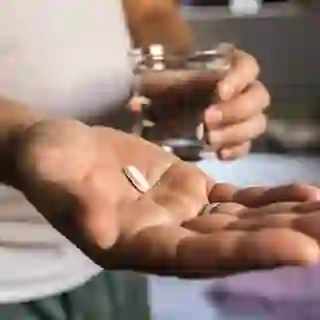Things You Didn't Know About Restless Legs Syndrome

Restless legs syndrome (RLS) is characterized by an uncontrollable urge to move the legs caused by throbbing, pulling, creeping, and otherwise uncomfortable sensations. These symptoms tend to occur at rest so they often become more frequent at night — and this can disrupt sleep.

RLS does not occur during sleep
RLS symptoms can make it harder to fall asleep but do not occur during sleep. If your limbs move during sleep, you may be living with periodic limb movement syndrome (PLMS) or periodic limb movement disorder (PLMD). PLMS is usually defined as more than five limb movements per hour of sleep. PLMD may be diagnosed if there are more than 15 limb movements per hour of sleep.

RLS might make you feel like a zombie
Because moving the legs relieves the discomfort, people with RLS often keep their legs in motion to minimize or prevent the sensations. They may pace the floor, constantly move their legs while sitting, and toss and turn in bed. This can lead to nights of wandering around the house (or even the neighborhood streets) in the dead of night in an attempt to get some relief.

RLS doesn’t only affect the legs
Although the ‘L’ in RLS stands for legs, other limbs can be affected. The creepy-crawly and tingling sensations association with RLS can also occur in the arms and other areas of the body. This spread of symptoms is more common the longer you have the condition.

RLS does not discriminate
RLS may begin at any age, although twice as many women as men are affected. Studies have suggested that RLS may be inherited, although it is also associated with low iron storage levels and is therefore more common among pregnant women and individuals with anemia.

Medication can be effective
Pramipexole (Mirapex ) and ropinirole (Requip) have proven to be effective for the treatment of RLS. Both drugs increase dopamine levels and are also used to treat Parkinson's disease. Gabapentin (Neurontin) and other medications may also be prescribed.

RLS might make you more impulsive
Since RLS drugs tend to target the dopamine receptors in the brain, they can lead to less inhibition and more impulsiveness. This may lead to less sexual inhibition and problematic behaviors, such as excessive gambling and reduced self-control.

Lifestyle changes can improve symptoms
Making some changes to your lifestyle can help relieve RLS symptoms. Regular exercise and striving for a healthy weight are the best lifestyle changes you can make. Eating well and quitting smoking can also help.

RLS may give you a renewed appreciation of massage
Massage can help relieve the tingly, uncomfortable sensations associated with RLS — and the positive effects may last long after the massage ends. One study found that getting a 45-minute massage twice each week for three weeks decreased symptoms significantly for two weeks after treatment ended.

RLS is tough on your partner, too
Perhaps unsurprisingly, RLS has a negative effect on your quality of life. What may be more surprising are the findings of a 2018 study, which found that RLS also had a negative effect on a partner’s sleep, leisure time, and relationship with the RLS patient. In other words, RLS affects more than just the individual who has been diagnosed with the condition.

RLS is linked to other health problems
RLS is associated with a number of health problems, including depression. One study found) that those with RLS were up to four times more likely to be classified with a depressive disorder compared to those without RLS. Evidence suggests that RLS is also linked to kidney disease and there may be an association with other conditions, including chronic obstructive pulmonary disease (COPD), multiple sclerosis (MS), and stroke.